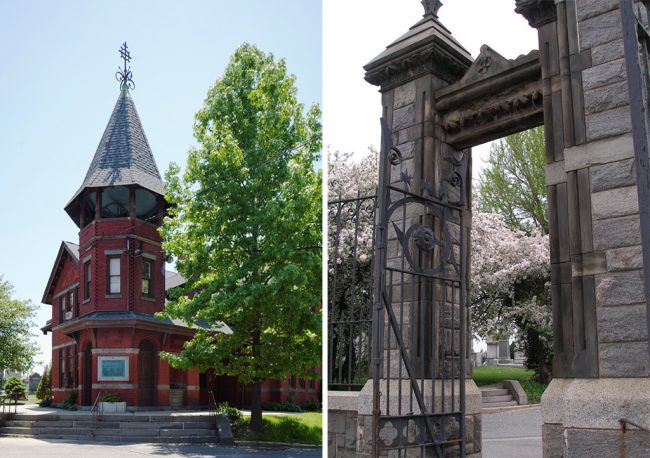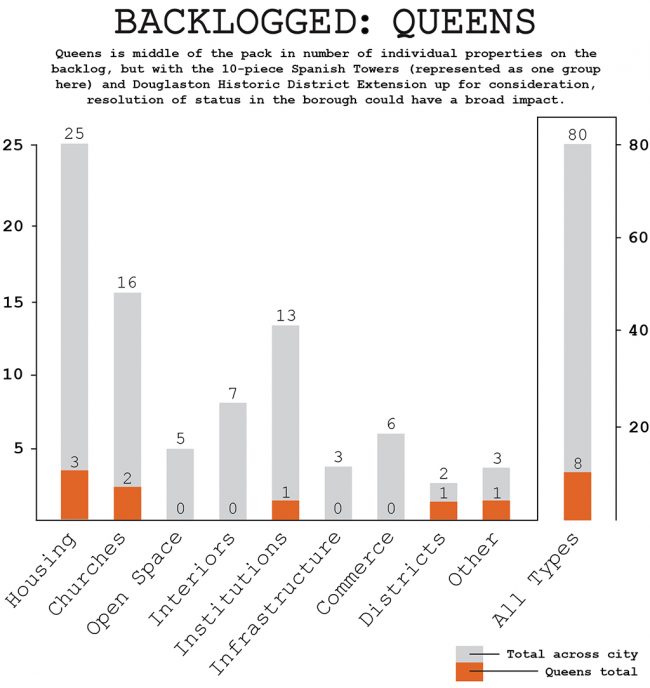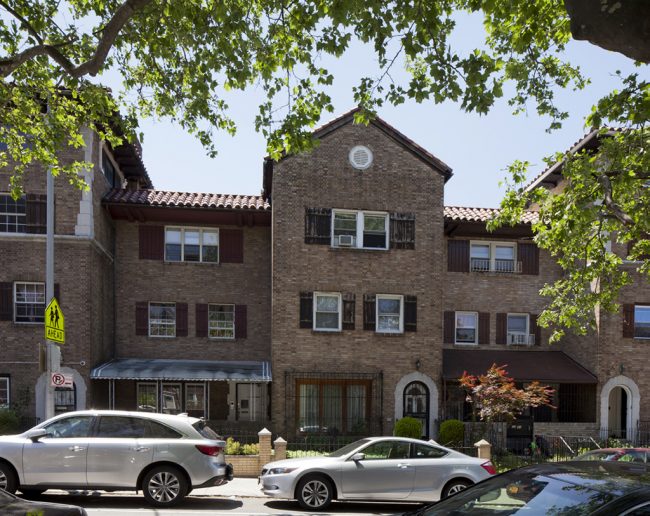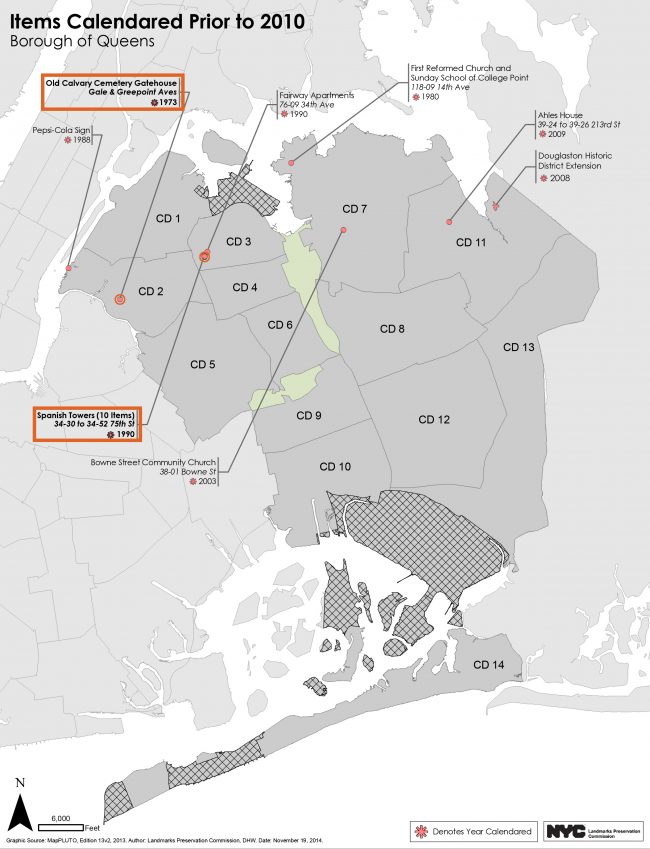
We are celebrating 15 years — and counting — of stories that are deeply researched and deeply felt, that build a historical record of what the city has been.
We are celebrating 15 years — and counting — of stories that are deeply researched and deeply felt, that build a historical record of what the city has been.
Last week we brought you histories of a mansion, the tax lot of a house that’s no more, and an old farmhouse — three Staten Island sites on the New York City Landmarks Preservation Commission’s backlog of almost 100 properties. These sites were once considered by the Commission for landmark designation (and attendant protection under law) but were not immediately acted upon — in LPC terminology, they were “calendared.” Some properties have languished on the calendar since the mid-60s.
Under mounting pressure from the City Council to speed up its process, the Commission launched an initiative to decide the status of these limbo properties by February 2016. In the remaining installments of Landmark Limbo, we’ll take you to one of the city’s first electric generating plants deep in the Financial District, the interior of a historic Broadway theater, and a cast iron factory in Williamsburg. But today, let’s head to the city’s largest borough, where recent debate on preservation has been particularly heated and decisions on two collections of properties could add quite a few buildings to the landmark rolls.

The Old Calvary Cemetery Gatehouse (L) lies just beyond the entrance gate (R) at the intersection of Gale Avenue and Greenpoint Avenue. | Photo via LPC
Old Calvary Cemetery Gatehouse (Institution)
Address: Gale Avenue & Greenpoint Avenue, Queens
Originally Calendared: 1973
Built: 1882
The gatehouse at Calvary Cemetery may stand as one of the few remaining examples of Queen Anne style architecture in Queens, but the cemetery’s roots extend to Manhattan and SoHo’s Old St. Patrick’s Cathedral.
Through the first half of the 19th century, burial grounds on the island began to disappear as New York City expanded. Yellow fever and cholera outbreaks, then believed to have originated from gravesites throughout Manhattan, also stoked public health concerns of the close proximity between the living and the dead. In response, the New York State Legislature passed the Rural Cemetery Act in 1847 to authorize the establishment of commercial cemeteries outside of Manhattan; four years later, a City ordinance would largely outlaw burials south of 86th Street. Both spurred disinterments and gravesite excavations to further make way for New York’s rapacious growth. (You can still be buried in Manhattan churchyards or private plots today, albeit for a very steep fee.)
A few years prior to the passage of the Rural Cemetery Act, the trustees of the Cathedral had the foresight to purchase land in Maspeth, Queens, for a cemetery. In 1848, Calvary Cemetery opened; its original division, First Calvary or Old Calvary was filled by 1867. Despite the lack of vacancy, the Cemetery built the red-brick, turreted gatehouse in 1882 to serve as a handsome new entrance to its original section. Calvary now stretches across 365 acres and four sections in Maspeth and Woodside and holds roughly 3 million graves, making it the most populous cemetery in the United States.
At the time of initial hearings on the Old Calvary Gatehouse, the Queens Historical Society and the New York Chapter of the American Institute of Architects supported its landmarking on the grounds of architectural significance. Unsurprisingly, the Calvary Cemetery staff and St. Patrick’s Cathedral trustees vehemently opposed designation, citing the increase in maintenance costs it would portend. In a 1973 letter to the LPC, the cemetery’s executive director, Edward Mitty, suggested that the site of the gatehouse might also be needed as additional burial ground in the future. At this October’s backlog hearings, the sides remained unchanged: the Catholic Community Relations Council, which spoke on behalf of the Archdiocese of New York and the Diocese of Brooklyn, expressed opposition while the New York Landmarks Conservancy and Municipal Art Society supported the designation.

Categories are not official Landmark Preservation Commission designations and were created by Urban Omnibus. Housing includes single- and multi-family housing; Open Space includes parks, cemeteries, and a country club; Institutions include cultural institutions and schools; and Commerce includes commercial and industrial properties. Sites that include multiple buildings up for landmarking are presented as one property. | Graphic by Jonathan Tarleton
Spanish Towers (Housing)
Address: 34-30 to 34-52 75th Street, Queens
Originally Calendared: 1990
Built: 1927-28
The Spanish Towers are a group of ten three- and four-story detached townhouses located in Jackson Heights. The one- to two-family homes feature Spanish-style tile roofs, tan brick, and arched doorways — elements also shared by buildings in the adjacent Jackson Heights Historic District, just a block to the east. Why the Spanish Towers were left out of that district (designated by the LPC in 1993 three years after initial hearings on the Towers) remains somewhat puzzling. While the Towers do not fall within the City’s district, they are encompassed by the National Register Jackson Heights Historic District. This designation does not protect properties deemed worthy of preservation with any enforceable regulations, though it does offer tax incentives to property owners involved in rehabilitation efforts.

The Spanish Towers in Jackson Heights | Photo via LPC
The Spanish Towers are currently being considered by the LPC as ten individual landmarks rather than as a district. Historic districts are essentially collections of landmark buildings, which are regulated the same way as individual landmarks. Meanwhile, further east in Queens, the LPC is considering an extension to the Douglaston Historic District, also in the backlog, which would include 17 homes, an apartment building, a church, and a school. In the case of the Spanish Towers, the district-individual distinction may not be significant, but at the very least amounts to more legwork for all parties involved.
Numerous advocacy groups are promoting an extension to the boundaries of the existing Jackson Heights district to include the Spanish Towers and more buildings in the area — a practice with precedent in SoHo, Greenwich Village, and Park Slope. While the Douglaston extension has been hotly contested, the Spanish Towers have garnered much support, including from residents.

All Queens properties currently in the LPC backlog. Properties profiled above are bordered in orange. Click here from more information on each Queens site. | Map via LPC
Ben Pardee is an urbanist, hip-hop enthusiast, and yogi. He is a project assistant on Urban Omnibus and blends his deep Texan pride with Yankee sensibilities.
The views expressed here are those of the authors only and do not reflect the position of The Architectural League of New York.